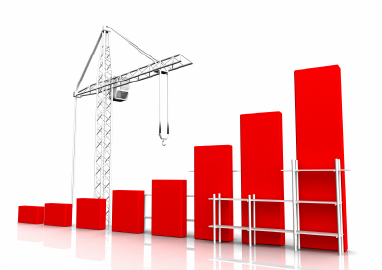 A company’s ERP system is its lifeblood. Small glitches can have major ramifications, which means that some companies hesitate to undertake any change when there's even the slightest potential for unplanned downtime or unexpected changes. Sadly, this risk avoidance behavior can actually expose a company to even more risk that it will fall behind its competitors in its ability to respond or adopt new business practices.
A company’s ERP system is its lifeblood. Small glitches can have major ramifications, which means that some companies hesitate to undertake any change when there's even the slightest potential for unplanned downtime or unexpected changes. Sadly, this risk avoidance behavior can actually expose a company to even more risk that it will fall behind its competitors in its ability to respond or adopt new business practices.
Most software vendors add new features and functionality to every new release, and users tend to focus on the way the new features can improve their day-to-day lives. However, unless a release has a feature that’s critical for a particular business, it’s often difficult to justify an upgrade based purely on new features. IT can also be reluctant to undertake an upgrade for functionality improvements because of the risk and extra work, especially if a company has customized their existing ERP version or has multiple sites to roll out.
The result is that companies often skip upgrades until they are forced to upgrade because the vendor is discontinuing support or because the ERP version is so out of date that it won’t run on current hardware. Other companies make policies—such as upgrading to every second or third release—that on the surface appear strategic but that are actually quite meaningless. The truth is that the best way to justify an ERP upgrade is to first develop an ERP strategy.
Building an ERP strategy doesn’t necessarily mean that your company should go out and look for new software. It does mean that your company should know exactly what it expects your ERP system to do for you. In most cases, your ERP system should be the backbone of your company’s transactional system, but it really only needs to fulfill a few strategic objectives to be valuable.
Here’s a simple example of an ERP strategy.
The ERP system must:
-
Support key business and manufacturing processes. (Most companies don’t have more than 5 to 10 key processes that truly differentiate them.)
-
Simplify business process changes.
-
Capture and report financial information without causing business delays.
-
Enable sufficient business agility to respond to customer demands.
-
Foster communication and collaboration within the company and throughout the value chain.
-
Accommodate corporate events such as mergers, acquisitions and divestitures easily.
-
Help ensure compliance with global or industry regulations and reporting requirements.
Even with a simple strategy such as this—and most companies’ strategies shouldn’t be much more complicated than this example—it’s easy to determine whether to upgrade or not. In addition, it’s important that C-level executives have bought in to the strategy and agree on the key differentiating business processes.
Evaluate new ERP releases by looking at the following criteria:
- Does the new release include functionality that improves your key business or manufacturing processes? If the answer is yes, your company should upgrade to enable improvements to those key processes.
- Has your company's underlying technology or architecture been upgraded? If so, your company should upgrade to prevent falling behind the technology curve. Waiting a long period of time between upgrades can be riskier than incremental upgrades.
- If your company anticipates introducing new products, entering new markets, mergers and acquisitions, or other changes, consider an upgrade.
- If an upgrade will eliminate customizations, it will likely be more cost effective to upgrade and use new standard functionality, versus trying to maintain the customization.
- If your company is in a regulated industry, or an industry with industry-specific compliance requirements, you should upgrade to make sure you stay current.
- Does your supply chain affect your company’s ability to satisfy your customers? If yes, and a new release of your ERP software touches the supply chain or customer interaction processes, then upgrade.
- Do you have teams in multiple locations that would benefit from any included increased collaboration capabilities? Your company should upgrade.
In most cases listed above, the risk of not upgrading your ERP software far outweighs any risk of doing the upgrade. By looking at the release in terms of how it affects your defined ERP strategy, rather than a collection of disconnected features, your company can make informed decisions about whether or not to upgrade.






